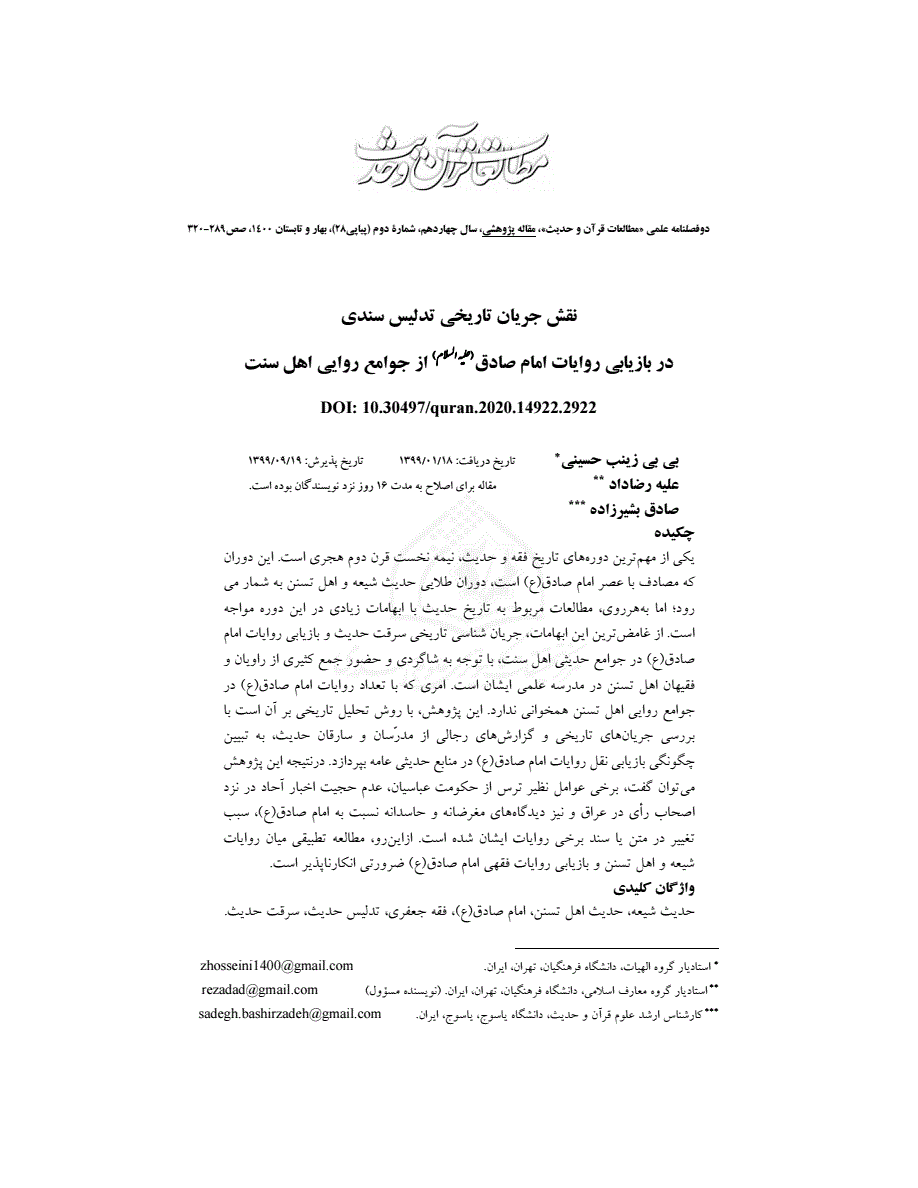Abstract:
یکی از مهمترین دورههای تاریخ فقه و حدیث، نیمه نخست قرن دوم هجری است. این دورآنکه مصادف با عصر امام صادق (ع) است، دوران طلایی حدیث شیعه و اهل تسنن به شمار میرود؛ اما بههرروی، مطالعات مربوط به تاریخ حدیث با ابهامات زیادی در این دوره مواجه است. از غامضترین این ابهامات، جریان شناسی تاریخی سرقت حدیث و بازیابی روایات امام صادق (ع) در جوامع حدیثی اهل سنت، با توجه به شاگردی و حضور جمع کثیری از راویان و فقیهان اهل تسنن در مدرسه علمی ایشان است. امری که با تعداد روایات امام صادق (ع) در جوامع روایی اهل تسنن همخوانی ندارد. این پژوهش، با روش تحلیل تاریخی بر آن است با بررسی جریانهای تاریخی و گزارشهای رجالی از مدرّسان و سارقان حدیث، به تبیین چگونگی بازیابی نقل روایات امام صادق (ع) در منابع حدیثی عامه بپردازد. درنتیجه این پژوهش میتوان گفت، برخی عوامل نظیر ترس از حکومت عباسیان، عدم حجیت اخبار آحاد در نزد اصحاب رأی در عراق و نیز دیدگاههای مغرضانه و حاسدانه نسبت به امام صادق (ع)، سبب تغییر در متن یا سند برخی روایات ایشان شده است. ازاینرو، مطالعه تطبیقی میان روایات شیعه و اهل تسنن و بازیابی روایات فقهی امام صادق (ع)، ضرورتی انکارناپذیر است.
One of the most important periods in the history of jurisprudence and hadith is the first half of the second century AH. This period, which coincides with the time of Imam Sadegh (AS), is considered the golden age of Shiite and Sunni hadith. However, studies on the history of hadith are very ambiguous in this period. One of the most confusing of these ambiguities is the historical current of the retrieval of the narrations of Imam Sadegh (AS), due to his apprenticeship and the presence of a large number of Sunni narrators and jurists in his scientific school. This research, by examining the historical analysis, intends to study the historical currents and rijali reports from the moderators and thieves of hadith, to explain how to retrieve the narration of Imam Sadegh's (AS) narrations in sunni hadith sources. As a result of this research, it can be said that some factors such as fear of the Abbasid rule, confrontation between the scholars and hadith scholars, as well as biased and corrupt views towards Imam Sadegh (AS), have caused changes in the text or document of some of his narrations. Therefore, a comparative study between Shiite and Sunni narrations and the retrieval of Imam Sadegh's (as) jurisprudential narrations is an undeniable necessity

(پژوهیار,
,
,
)

